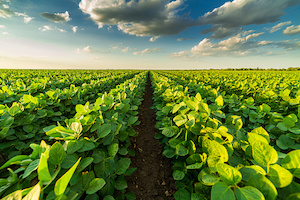Frost damage is a concern that soybean producers need to take into account. To help producers address this issue, University of Missouri Extension soybean specialist Bill Wiebold is sharing his tips.
Wiebold stresses that producers should harvest frost-damaged soybean based on seed moisture content, rather than how the plants look after frost. Delaying harvest can potentially result in grain shatter and subsequent yield loss.
Many soybean breeders select varieties for their shattering tolerance. However, the halves are prone to rupturing if left out in the field for too long after damage or maturity.
During the harvesting process, Wiebold recommends adjusting combine settings to allow for plants with wetter than normal stems and leaves. He also notes that seeds will shrink to a smaller than normal size, and seed will be more oblong than normal.
Aeration is essential during the storing process, according to Wiebold. He states that frost-damaged soybean will be able to store as easily as normal soybean.
Below-freezing temperatures are not prone to impacting plants that have shown signs of maturing before the actual freezing. A “killing freeze” usually indicates a temperature as low as 28 degrees Fahrenheit for a minimum of four hours.
Wiebold notes that damage may not always be uniform across a field. Because cold air is heavy, it drains down slopes to pool in lower parts of a field, resulting in variations in damage.
For more insight into how to handle frost-damaged crops and updates on growing conditions, visit the University of Missouri Extension website.
